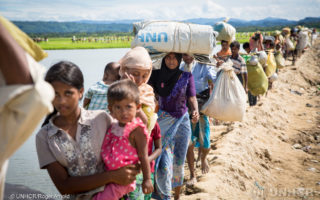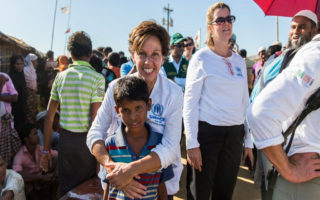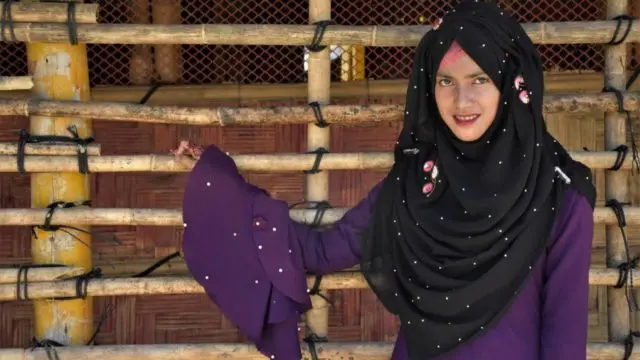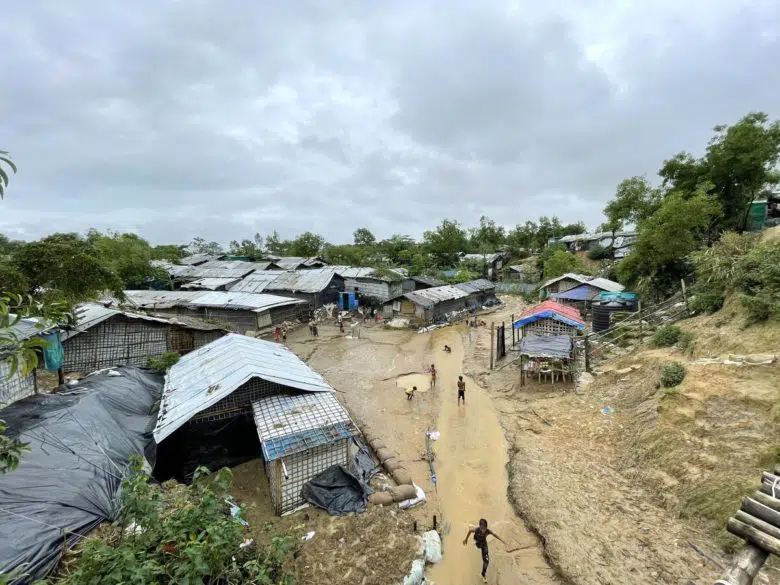
Rohingya refugee children play after heavy rainfall in a camp in Cox’s Bazar, Bangladesh. © UNHCR/Amos Halder
2022 marks the fifth year since the mass exodus of Rohingya refugees from Myanmar fleeing violence and persecution in the northern part of Rakhine State. In August 2017, some 740,000 vulnerable men, women and children arrived by foot and by boat, crossing into Bangladesh in what was the swiftest and largest population movement in the region for some 50 years.
Since then, UNHCR in Bangladesh has undertaken a large-scale response to provide protection and assistance to nearly 900,000 Rohingya people, a stateless Muslim minority, who have sought refuge in the country, shifting from an emergency to a protracted situation.
In March 2021, a devastating, deadly blaze tore through the Kutupalong Balukhali refugee camps in Cox’s Bazar, leaving 11 people dead and reducing nearly 10,000 shelters to ashes.
Mohammed Salam, 30, a refugee who was forced to flee to Bangladesh years ago, was among the first responders. “My work is to serve the people and rescue them from any danger they are facing,” he says.
A particularly heavy monsoon season followed, which brought more than 700 millimetres of rain in a week spanning from late July to early August. The torrential downpour inundated more than 400 local villages, washing away shelters and triggering flooding and landslides that killed some 20 people, 10 of whom were refugees.
Even prior to this, monsoon season had already wreaked havoc, affecting more than 117,000 refugees through soil erosion, landslides, flooding, wind and storms in the hilly terrain of Cox’s Bazar. Hundreds of community facilities were impacted, including primary health clinics. Roads were blocked by debris, pathways washed away, and foot bridges destroyed, making recovery efforts even more difficult.
Coordinated efforts to prepare the camps and refugees in advance of monsoon season took place throughout the year. As the monsoon hit, UNHCR immediately deployed its onsite response team to assess the damage and coordinate with volunteers, partners and officials in UNHCR-managed camps.
Other ways UNHCR is helping Rohingya refugees:
- Training refugee volunteers to respond to emergencies. More than 7,000 volunteers have been trained by UNHCR and partners. These volunteers worked tirelessly to rescue refugees stranded by severe flooding, and helped to organize and coordinate the work of clearing away mud, repairing shelters, roads and bridges.
- UNHCR launched “Girl Shine” in September 2021 in an effort to prevent violence against teen girls in the Cox’s Bazar camps. The curriculum, originally developed by the International Rescue Committee, was adapted for the Rohingya context by UNHCR and its partners and helps both teen girls and their caregivers. The adapted curriculum covers six core topics: trust, social and emotional skills, health and hygiene, safety, solidarity and visioning. The program has been initiated in 10 camps, with plans to expand in 2022.
- The COVID-19 vaccination campaign for Rohingya refugees (pictured below) began in August 2021, led by the Bangladeshi authorities with technical support from UNHCR, the World Health Organization, and other humanitarian partners. More than 33,000 refugees aged 55 years and older have been fully vaccinated.
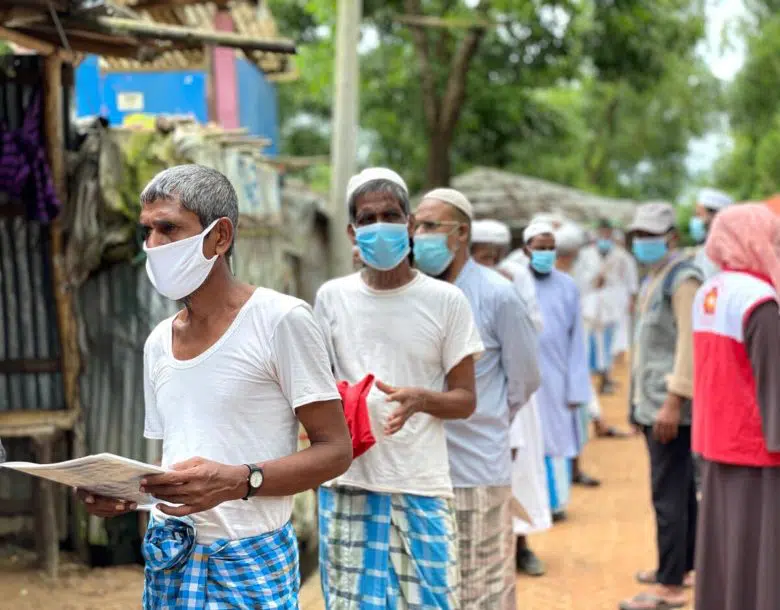
Rohingya refugees line up at a vaccination centre to receive their first COVID-19 jab in Kutupalong refugee camp in Cox’s Bazar, Bangladesh. © UNHCR/Amos Halder
PLEASE SUPPORT ROHINGYA REFUGEES
Originally published by: UNHCR Canada 2 St. Clair Avenue West, Suite 802, Toronto, Ontario M4V 1L5.



